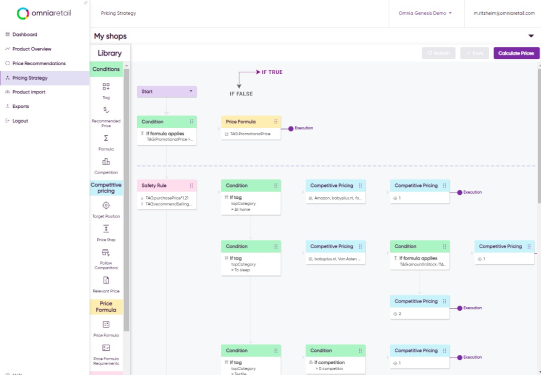
04.02.2021
Table of contents:
Modern-day pricing is so much more than a numbers game. When thought about correctly, it’s a powerful way to build your brand and drive more profits.
But how do you access the full power of pricing? The key is to understand the psychology that goes into a pricing strategy, and this article is a perfect place to start.
To continue our series of articles about different pricing strategies, in this article we’ll discuss what behavioural targeting is, how it works, and what you need to build a great behavioural targeting strategy.
Behavioural targeting is a type of segmentation that utilises information about a website visitor or app user’s past behaviours to guide advertising insertion. It combines technical and geographical data of each visitor with other available habit history, including website actions, search history, preferred categories and more.
All of this information is synthesised to create a behavioural profile of the user that is as complete as possible and can be used to initiate personalised marketing. Targeted pop-ups, offers, ads and push notifications can boost engagement and time spent on the page, since they are tailored to each individual and what they are predicted to be interested in.
Personalisation is of high importance to today’s shopper: Salesforce research found that two-thirds of consumers “expect companies to understand their unique needs and expectations”, while more than half (52%) expect all offers to be personalised. Behavioural targeting is one route to more effective personalisation.
Using behavioural targeting in e-commerce has a number of benefits, including:
Contextual targeting is an advertising strategy that places ads on contextually relevant websites and pages. For instance, if a user is browsing a website that offers gardening tips, contextual targeting could target them with ads for gardening tools.
While behavioural targeting is a strategy based on past behaviours and habits of individuals, contextual targeting uses the context of the website a user is on to target them with relevant ads. This difference means that behavioural targeting requires consumer data, as ads and other marketing tactics are based on them as an individual versus the web page. Contextual targeting doesn’t require consumer data; only information on the website itself.
There are several types of data that can be used for behavioural targeting, all of which enable businesses to make advertising and other marketing methods more personalised:
Here’s a look at how behavioural targeting actually works for e-commerce businesses, from the first pieces of data to delivering a personalised ad:
1) Data collection
Various data sources, such as website interactions, purchase history and campaign engagement, are collected and aggregated to create a comprehensive dataset of user behaviour, often using cookies or tracking mechanisms.
2) User segmentation
The collected data is analysed to identify patterns and segments of users with similar behaviours and interests. This segmentation allows businesses to group users based on their preferences, browsing habits, purchase behaviour or other relevant factors.
3) Profile creation
User profiles are created based on the segmented data, combining information about demographics, interests, browsing history and purchase behaviour. These profiles provide a holistic view of each user's preferences and past actions.
4) Targeting strategy development
Using the created user profiles, businesses develop targeted strategies to engage and influence users, which can be continually delivered to the proper consumers when a certain behaviour trigger occurs.
5) Content delivery and optimization
The targeted content, such as personalised recommendations, ads, pop-ups or email campaigns, is delivered to the appropriate user segments through channels like their website, email, social media, etc. Over time, the effectiveness of the targeting is measured and optimised based on user responses and conversions.
These steps enable e-commerce businesses to leverage behavioural data to understand their users better and deliver personalised experiences, ultimately increasing engagement, conversion rates and customer satisfaction.
